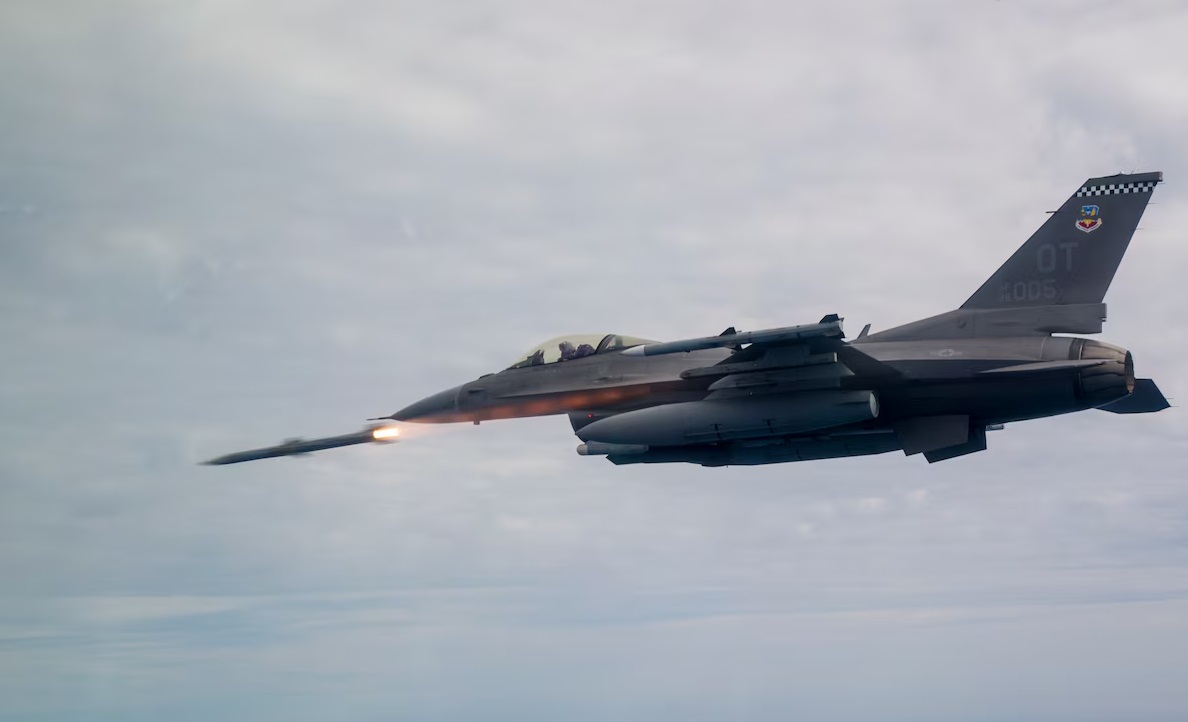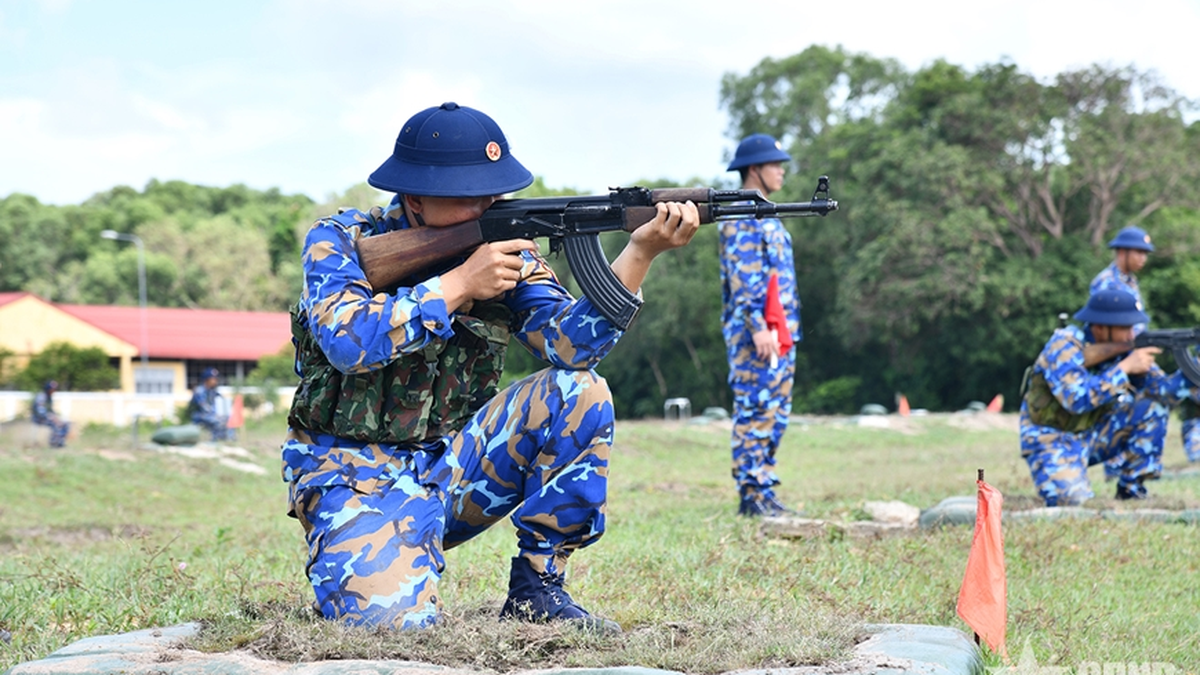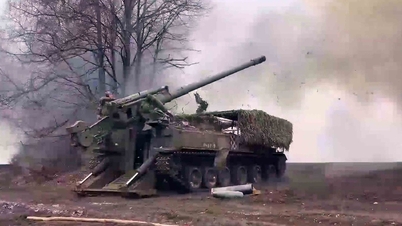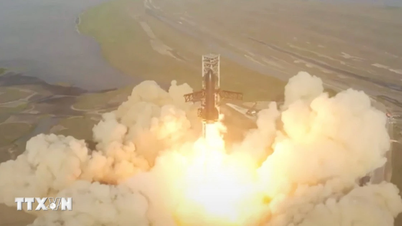So far, the Russian tactic of using multirole fighter jets to drop guided glide bombs has proven effective. The bombs have a range of 40-65 km, beyond the interception range of most Ukrainian fighter jets and anti-aircraft missile batteries.
Therefore, the F-16 fighter jets that the West has pledged to deliver to Ukraine could be the solution to intercept Russian bombers. However, according to analyst Justin Bronk from the Royal United Services Institute (RUSI), based in London, each F-16 sortie will face challenges from Moscow's air defense system, especially the S-400 batteries, with a range of 400 km.

F-16 fighter jets in the US practice launching AIM-120 air-to-air missiles in 2019
Bronk pointed out that if the F-16s were to be deployed to intercept the Russian bombers, the Ukrainian pilots would have to fly low to avoid being targeted by air defenses. However, this would reduce the effectiveness of the AIM-120D air-to-air missiles normally equipped on the F-16s, according to Forbes on June 17.
"If launched at low altitude, the missile will start flying in a dense air environment, with high aerodynamic drag, and will be affected by gravity as it flies upward towards the target. As a result, the missile will not reach the desired speed or altitude," said Mr. Bronk. If fired from low altitude, the AIM-120's operating range will be reduced by tens of kilometers, compared to its maximum range of 180 kilometers.
This partly explains why the Ukrainian army has recently increased its attacks on Russian air defense systems, as well as Moscow's bomber bases and weapons depots.
Another solution, according to Bronk, is to use longer-range weapons, such as the Meteor air-to-air missile, which has a range of more than 200 km. However, Ukraine can only use this missile if Sweden delivers JAS-39 Gripen fighters. Stockholm has given the green light, but said it would only consider delivering the aircraft when Kyiv receives its first batch of F-16s.
Source: https://thanhnien.vn/tiem-kich-f-16-buoc-phai-bay-thap-neu-trien-khai-tren-dat-ukraine-185240622173011008.htm



![[Photo] President Luong Cuong receives Prime Minister of the Kingdom of Thailand Paetongtarn Shinawatra](https://vphoto.vietnam.vn/thumb/1200x675/vietnam/resource/IMAGE/2025/5/16/52c73b27198a4e12bd6a903d1c218846)
![[Photo] Prime Minister Pham Minh Chinh and Prime Minister of the Kingdom of Thailand Paetongtarn Shinawatra attend the Vietnam-Thailand Business Forum 2025](https://vphoto.vietnam.vn/thumb/1200x675/vietnam/resource/IMAGE/2025/5/16/1cdfce54d25c48a68ae6fb9204f2171a)




























![[Photo] The Prime Ministers of Vietnam and Thailand witnessed the signing ceremony of cooperation and exchange of documents.](https://vphoto.vietnam.vn/thumb/1200x675/vietnam/resource/IMAGE/2025/5/16/935407e225f640f9ac97b85d3359c1a5)
































































Comment (0)